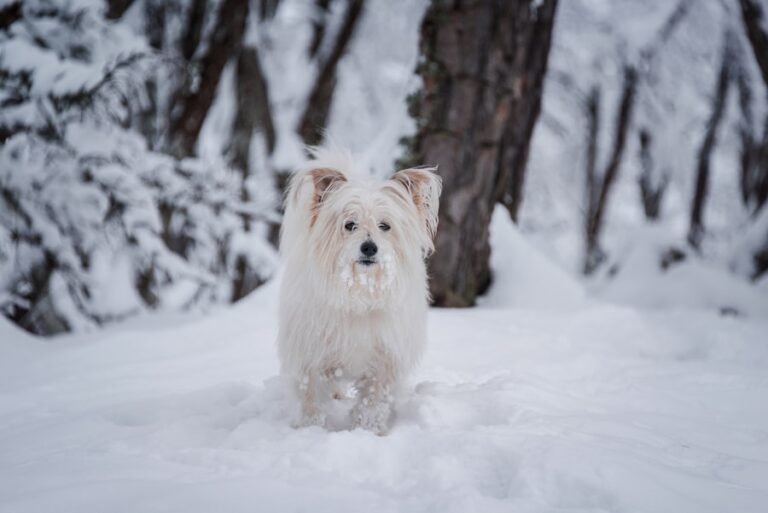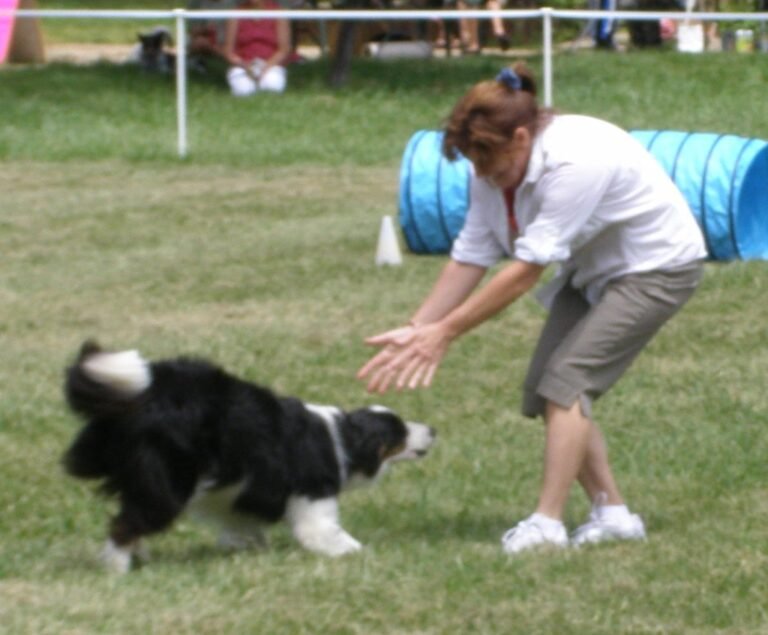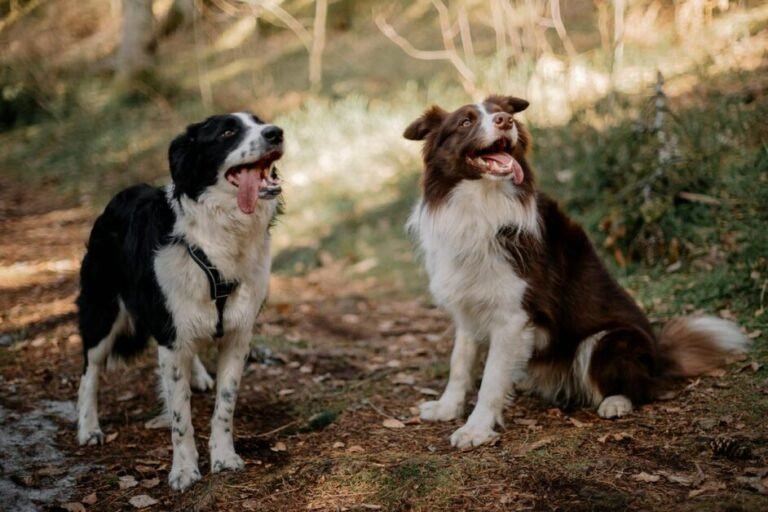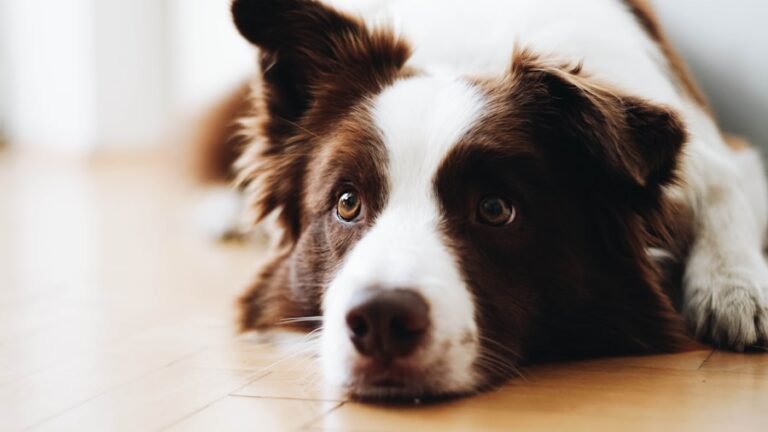How to Train Border Collie Puppy: Power-Packed Techniques for Quick Learning
How to train border collie puppy: Border Collies are known for their intelligence and energy, making them eager learners. In this comprehensive guide, we will provide you with expert tips and techniques to train your Border Collie puppy effectively. From basic obedience training to house training and socialization, we will cover all the essential aspects of training a Border Collie puppy. With our power-packed techniques, you’ll be able to turn your puppy into a well-behaved and obedient pet in no time.
How to Train Border Collie Puppy – Key Takeaways:
- Start training your Border Collie puppy as soon as you bring them home.
- Have essential supplies ready, such as a treat pouch, collar, harness, and training lead.
- Teach basic commands like sit, down, and name recognition using positive reinforcement.
- Recall training is crucial for your puppy’s safety and should be practiced in distracting environments.
- Leash training is important for enjoyable and safe walks with your Border Collie puppy.
Getting Started with Training: Essentials for Border Collie Puppy Training
Training your Border Collie puppy is an exciting and rewarding journey. To get started on the right paw, there are a few essentials you’ll need to ensure smooth training sessions. Let’s take a look at what you’ll need and some important training techniques to kickstart your border collie puppy’s training.
How to Train Border Collie Puppy – Gather Your Training Supplies
Before you begin training your Border Collie puppy, gather the necessary supplies to make the process more efficient. These supplies include:
- A treat pouch for rewards
- A soft collar or harness for comfortable control
- A training lead for guidance during walks
- A soft mat or vet bed for a designated training area
- Treats to reward good behavior
- Two identical toys for swaps and trades during training exercises
Having these supplies readily available will help create a positive and organized training environment, and help you with how to train border collie puppy.
Establish a Training Schedule
Consistency is key when training a Border Collie puppy. Establishing a routine or training schedule will not only provide structure but also help your puppy understand what is expected of them. Aim for short, frequent training sessions throughout the day to keep your puppy engaged and prevent them from becoming overwhelmed.
Choose a time when your puppy is alert and has had a chance to burn off excess energy. This will ensure they are focused and receptive to learning. Remember to always end training sessions on a positive note, even if progress is slow. Celebrate small achievements and gradually build upon them.
Incorporate Leash Training
Leash training is an essential skill for any dog, including Border Collie puppies. Introduce your puppy to the leash gradually, allowing them to become comfortable with wearing it before attempting to walk on it. Start with short, supervised walks in a quiet, familiar environment.
During leash training, focus on teaching your Border Collie puppy to walk beside you without pulling. Encourage loose leash walking by rewarding your puppy for walking calmly by your side. Use positive reinforcement techniques such as treats and praise to reinforce desired behavior. With patience and consistency, your Border Collie puppy will soon become a pro at walking nicely on a leash.
With these essential supplies and training techniques in place, you’re ready to embark on a successful training journey with your Border Collie puppy. In the next section, we’ll dive into teaching your puppy basic commands such as sit, down, and name recognition.
Basic Commands: Teaching Your Border Collie Puppy Sit, Down, and Name Recognition
Teaching your Border Collie puppy basic commands is an important part of their training journey. These commands, such as sit, down, and name recognition, lay the foundation for their obedience and responsiveness. With a few simple techniques and consistent practice, you can easily teach your puppy these essential commands.
To start, find a quiet and distraction-free area to conduct your training sessions. This will help your puppy stay focused and engaged. Begin by teaching the “sit” command. Hold a treat in front of your puppy’s nose and slowly move it above their head, causing them to naturally lower their bottom to the ground. As soon as their bottom touches the floor, say the word “sit” and reward them with the treat. Repeat this process several times until your puppy understands the association between the word and the action.
Next, introduce the “down” command. Start with your puppy in a sitting position, then hold a treat near their nose and slowly move it towards the ground. As your puppy follows the treat, their body should naturally lower into a lying down position. Once they are fully down, say the word “down” and give them the treat as a reward. Repeat this exercise until your puppy consistently responds to the command.
Creating Name Recognition
In addition to basic commands, it’s crucial to teach your Border Collie puppy name recognition. This will help them understand when you are addressing them specifically. Begin by saying your puppy’s name in a clear and upbeat tone, followed by a treat or a reward. Repeat this process multiple times a day, gradually increasing the distance between you and your puppy. Over time, your puppy will learn to associate their name with positive experiences and will respond when called.
Recall Training: Teaching Your Border Collie Puppy to Come When Called
Recall training is an essential skill for any Border Collie puppy. It ensures their safety and allows you to maintain control in various situations. Whether you’re at the park, on a hike, or in your own backyard, teaching your puppy to come when called is crucial. Follow these effective techniques to master recall training and enjoy peace of mind in any environment.
1. Start in a Distraction-Free Environment
Begin recall training in a quiet and familiar space with minimal distractions. This could be your living room or backyard. By starting in a controlled environment, you can focus your puppy’s attention solely on you and the training process. This initial stage is crucial for laying a strong foundation.
2. Use Positive Reinforcement
Positive reinforcement is key to successful recall training. Reward your Border Collie puppy with treats, verbal praise, and plenty of affection every time they come to you when called. This positive association will encourage them to repeat the behavior and reinforce the importance of coming when called. Be consistent and generous with rewards to keep your puppy motivated.
3. Gradually Increase Distractions
Once your puppy has mastered recall in a distraction-free environment, gradually introduce more challenging scenarios. Start by practicing in slightly busier areas, such as a local park, and gradually work up to more chaotic environments. Remember to provide plenty of praise and rewards every time your puppy responds to your recall command, even in the presence of distractions.
Walking Nicely on a Leash: Leash Training for Border Collie Puppies
Leash training is an essential skill to teach your Border Collie puppy. Not only does it ensure their safety during walks, but it also promotes good behavior and prevents them from pulling or becoming overly excited. Follow these tips to make leash training a positive and successful experience for both you and your puppy.
1. Introduction to the Leash
Start by introducing your puppy to the leash in a calm and positive manner. Allow them to sniff and investigate the leash before gently attaching it to their collar or harness. Keep the initial leash sessions short and gradually increase the duration as your puppy becomes more comfortable.
2. Encouraging Loose Leash Walking
The key to successful leash training is to encourage your Border Collie puppy to walk on a loose leash. Use positive reinforcement techniques to reward them for walking beside you without pulling. Carry treats or provide verbal praise and affection whenever they maintain a loose leash. Remember to be patient and consistent with your training.
3. Addressing Common Challenges
Leash training may come with some challenges, such as pulling, lunging, or distractions. To address these issues, practice in a controlled environment with minimal distractions. Use treats or toys as distractions to redirect your puppy’s attention if they become fixated on something. Consider using a front-clip harness or a head halter to provide more control and discourage pulling.
With consistent training and positive reinforcement, your Border Collie puppy will learn to walk nicely on a leash. Remember to be patient and understanding, as each puppy learns at their own pace. Soon enough, you’ll be able to enjoy peaceful, enjoyable walks together.
Fun and Games: Teaching Your Border Collie Puppy to Play Fetch
Border Collies are known for their boundless energy and love for games. Teaching your Border Collie puppy to play fetch can be a fun and engaging activity that provides both mental and physical stimulation. Here’s how you can train your puppy to retrieve and bring back a ball or toy:

- Start with a soft and lightweight toy or ball that your puppy can easily hold in their mouth. You can use a squeaky toy or a tennis ball.
- Introduce the toy to your puppy and let them sniff and become familiar with it. Encourage their interest and excitement by using an enthusiastic tone of voice.
- Throw the toy a short distance and say the command “fetch” or “go get it.” If your puppy shows interest in chasing after the toy, praise them and offer a treat as a reward.
- When your puppy retrieves the toy, encourage them to bring it back to you by using the command “come” or “bring it here.” You can guide them back to you by squatting down and holding out your arms.
- Once your puppy brings the toy back, reward them with praise and a treat. Repeat this process several times, gradually increasing the distance of the throws as your puppy becomes more comfortable and confident.
- If your puppy drops the toy before reaching you, gently encourage them to pick it up again and continue towards you. You can use the command “take it” or “hold” to encourage them to keep the toy in their mouth.
Remember to keep the training sessions short and positive, using treats and praise to motivate your puppy. Gradually increase the difficulty of the game by introducing distractions or playing fetch in different environments. Playing fetch with your Border Collie puppy not only provides physical exercise but also strengthens the bond between you and your furry companion.
Crate Training: Teaching Your Border Collie Puppy to Sleep in Their Crate
Crate training is a valuable tool for teaching your Border Collie puppy to sleep peacefully in their crate. It provides them with a safe and secure space of their own, and can also assist in house training. Here, we will guide you through the process of crate training your Border Collie puppy, ensuring that it is a positive experience for both of you.
Introducing the Crate
The first step in crate training is to introduce the crate to your Border Collie puppy in a positive and inviting way. Place the crate in a quiet area of your home, and make it comfortable by adding soft bedding, toys, and treats. Leave the crate door open so that your puppy can explore and get familiar with it at their own pace.
Encourage your puppy to enter the crate by tossing treats inside and using verbal cues like “crate” or “bed”. Gradually increase the amount of time your puppy spends in the crate, starting with short intervals and gradually extending them. Remember to always praise and reward your puppy for entering and staying in the crate.
Establishing a Routine
Consistency is key when crate training your Border Collie puppy. Establishing a routine will help them understand when it’s time to sleep or relax in their crate. Create a schedule that includes regular crate time, such as during nap times and overnight. Stick to this schedule to help your puppy develop a sense of routine and familiarity with their crate.
During crate time, provide your puppy with quiet and calming activities, such as chew toys or puzzle toys stuffed with treats. This will help keep them occupied and make the crate a positive and enjoyable space. Avoid using the crate as a punishment or leaving your puppy confined for extended periods of time, as this can create negative associations with the crate.
Gradual Alone Time
Once your Border Collie puppy is comfortable and confident in their crate, you can begin gradually increasing the amount of time they spend alone in it. Start by leaving the room for short periods, ensuring that your puppy remains calm and relaxed. Slowly increase the duration of your absence, always returning before your puppy becomes anxious or distressed.
Make sure to provide your puppy with plenty of exercise and mental stimulation before crate time, as a tired and content puppy is more likely to settle down and relax in their crate. Additionally, avoid making a big fuss when leaving or returning to prevent separation anxiety. By gradually building up alone time, your Border Collie puppy will learn to cope with being left alone and see their crate as a safe and comfortable space.
Alone Time: Helping Your Border Collie Puppy Cope with Being Left Alone
Leaving your Border Collie puppy alone can be a challenging experience for both of you. However, with the right approach, you can help your puppy develop independence and cope with being by themselves. Here are some tips to make alone time a positive and stress-free experience for your furry friend:
Create a Comfortable Environment
- Designate a safe and cozy space for your puppy to stay in when you’re not around. This can be a crate, a puppy-proofed room, or a designated area with their bed and toys.
- Make sure the environment is calming and free from any potential hazards that could cause anxiety or accidents.
- Provide familiar scents, such as an unwashed blanket or a piece of your clothing, to help your puppy feel more secure and connected to you.
Gradually Increase Alone Time
- Start by leaving your puppy alone for short periods, such as a few minutes, and gradually lengthen the time as they become more comfortable.
- Use positive reinforcement and rewards when your puppy shows calm behavior during alone time. This will help them associate being alone with positive experiences.
- Consider using interactive toys or treat-dispensing puzzles to keep your puppy engaged and mentally stimulated while you’re away.
Address Any Anxiety or Distress
- If your puppy shows signs of anxiety or distress during alone time, such as excessive barking, pacing, or destructive behavior, consult with a professional trainer or behaviorist for guidance.
- They can provide personalized advice and strategies to help your puppy overcome separation anxiety and feel more at ease when left alone.
- Remember to be patient and understanding throughout the process. Each puppy has a unique temperament and may require different techniques to cope with being alone.
By gradually introducing alone time, creating a comfortable environment, and addressing any anxiety or distress, you can help your Border Collie puppy become more independent and confident. Remember, training takes time and consistency, so be patient and celebrate small victories along the way.

House Training: Teaching Your Border Collie Puppy to Go to the Bathroom in the Right Place
House training is an essential aspect of raising a Border Collie puppy. By following a consistent routine and utilizing positive reinforcement, you can effectively teach your puppy to go to the bathroom in the designated area. Here are some key tips to help make the house training process smooth and successful:
- Establish a schedule: Set a regular feeding schedule for your puppy and take them outside to the designated bathroom area shortly after meals. Consistency is key in helping them understand when and where they should go.
- Take them out often: Puppies have small bladders and need to go out frequently. Take your Border Collie puppy outside every 1-2 hours, as well as after naps, playtime, and before bedtime. This will help prevent accidents indoors.
- Use positive reinforcement: When your puppy eliminates in the correct spot, praise and reward them with treats or verbal encouragement. This positive association will reinforce their good behavior.
- Watch for cues: Pay attention to your puppy’s behavior and signs that they may need to go, such as sniffing the ground, circling, or whining. When you notice these cues, immediately take them outside to their designated bathroom area.
Patience and consistency are key to house training success:
House training a Border Collie puppy takes time and patience. Accidents may happen along the way, but it’s important not to punish or scold your puppy. Instead, clean up any accidents using an enzymatic cleaner to remove the scent and prevent future accidents in the same spot.
With a consistent schedule, positive reinforcement, and a watchful eye, your Border Collie puppy will learn to go to the bathroom in the right place. Remember to be patient and celebrate their successes, and soon enough, your furry friend will have mastered house training.
How to Train Border Collie Puppy – Conclusion
Training a Border Collie puppy requires dedication, patience, and the right techniques. With our comprehensive guide, you now have the tools to shape your Border Collie puppy into a well-behaved and obedient companion. Remember to focus on positive reinforcement, consistency, and understanding the unique qualities of the Border Collie breed.
Throughout this training journey, always keep in mind the importance of building a strong bond with your pet. By investing time and effort into training, you’ll not only have a well-trained Border Collie, but also a happy and fulfilled companion.
So, follow our expert tips and advice, apply the power-packed techniques, and watch your Border Collie puppy thrive. Together, you’ll create memories and enjoy the rewards of a cherished and well-trained pet. Start your journey today and discover the joy of how to train border collie puppy!
How to Train Border Collie Puppy – FAQ’s
When should I start training my Border Collie puppy?
Training can start as soon as you bring your puppy home. It’s never too early to start teaching them basic commands and establishing good behaviors.
What supplies do I need for training my Border Collie puppy?
Some essential supplies include a treat pouch, a soft collar, a harness, a training lead, a soft mat or vet bed, treats, and two identical toys for swaps and trades.
What basic commands should I teach my Border Collie puppy?
It’s important to teach your puppy basic commands like sit, down, and name recognition. These commands will form the foundation for their obedience and behavior.
How do I train my Border Collie puppy to come when called?
Recall training is essential for their safety. We will provide effective techniques and strategies to train your puppy to come when called, even in distracting environments.
How do I leash train my Border Collie puppy?
Leash training is vital for walks. We’ll guide you on introducing the leash, encouraging loose leash walking, and addressing common challenges during leash training.
How can I teach my Border Collie puppy to play fetch?
Teaching your puppy to play fetch can be a great way to engage their minds and provide exercise. We’ll outline a step-by-step process for training them to retrieve and bring back a ball or toy.
How do I crate train my Border Collie puppy?
Crate training provides a safe space for your puppy. We’ll guide you through introducing the crate, making it inviting, and establishing a routine for peaceful crate sleeping.
How can I help my Border Collie puppy cope with being left alone?
We’ll provide tips on gradually increasing alone time, creating a soothing environment, and addressing anxiety or distress your puppy may experience when left alone.
What is the best way to house train my Border Collie puppy?
House training is essential. We’ll outline effective techniques and schedules to help your puppy learn to go to the bathroom in the designated area.
What should I remember when training my Border Collie puppy?
Training requires dedication, patience, and the right techniques. Focus on positive reinforcement, consistency, and understanding the unique qualities of the Border Collie breed.
How to Train Border Collie PuppySource Links
- https://zigzag.dog/en-us/blog/puppy-training/breed-specific/guide-how-to-train-border-collie-puppy/
- https://perfectpetzzz.com/are-border-collies-easy-to-train-here-are-10-tips-for-training-the-smartest-dog-breed/
- https://www.burgesspetcare.com/blog/uncategorised/how-to-train-a-border-collie/









